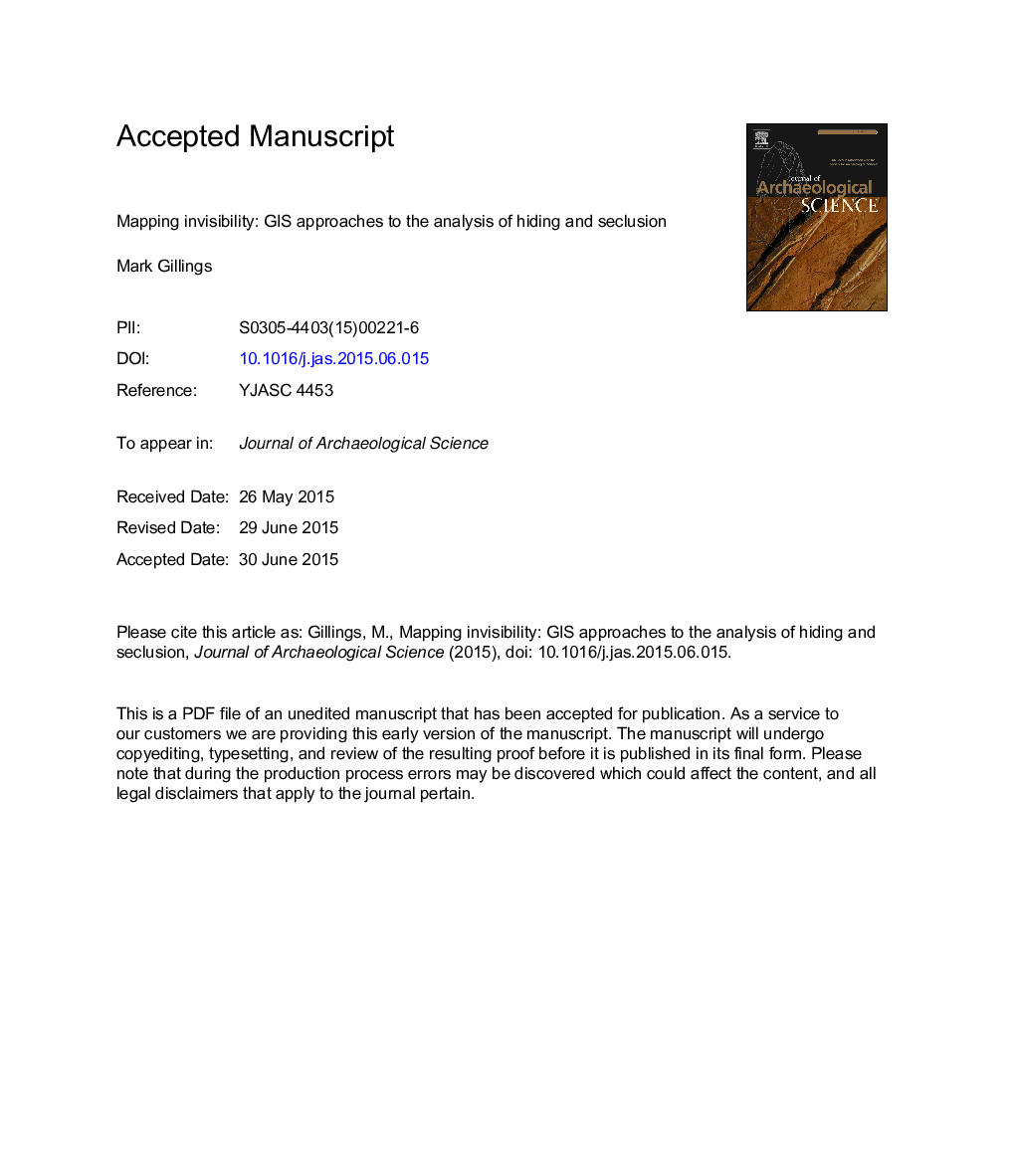| Article ID | Journal | Published Year | Pages | File Type |
|---|---|---|---|---|
| 7441690 | Journal of Archaeological Science | 2015 | 31 Pages |
Abstract
Analyses of visibility have become a commonplace within landscape-based archaeological research, whether through rich description, simple mapping or formal modelling and statistical analysis, the latter increasingly carried out using the viewshed functionality of GIS. The research presented here challenges current obsessions with what is visible to focus instead upon the interpretative benefits of considering the invisible and the complex interplay of visibility and concealment that frequently accompany landscape movement and experience. Having highlighted the difficulties in analysing relational properties such as invisibility and hiding using traditional archaeological techniques, a series of new GIS methodologies are presented and evaluated in the context of an original study of a series of remarkably small, visually non-intrusive prehistoric megalithic monuments. The results serve to challenge dominant interpretations of these enigmatic sites as well as demonstrating the utility, value and potential of the GIS-based approaches developed.
Related Topics
Physical Sciences and Engineering
Materials Science
Materials Science (General)
Authors
Mark Gillings,
